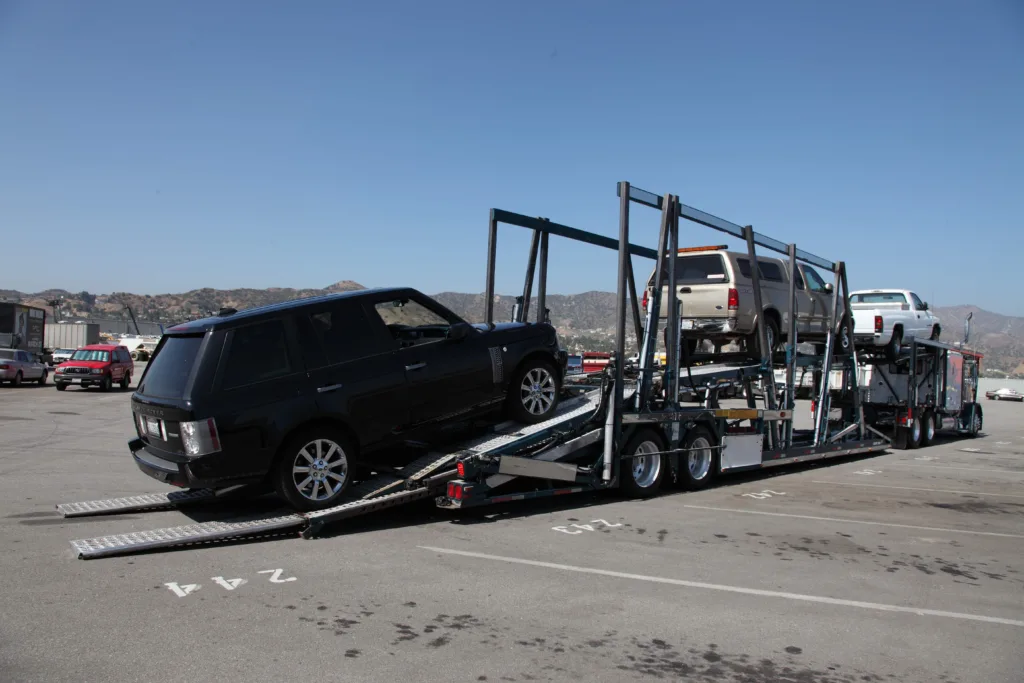
California’s Gas Price Storm Is Just Beginning
If you’re in the auto transport business or just planning to ship your vehicle across state lines, you’ve probably already felt the sting of rising gas prices. In the case of California, that sting is turning into a full-on squeeze! Due to the updated Low Carbon Fuel Standard (LCFS), the recent decision by Senate Democrats to block SB 2 means a $0.65 per gallon increase, and it’s moving forward on July 1, 2025. Those in support of this decision say it’s a necessary step toward hitting climate goals. On the other side, critics say that costs are now skyrocketing. No matter the side you’re on, one thing is clear: these increasing gas prices are going to shape how we ship cars in the U.S., especially in the Golden State with the surge in California gas prices.
Overview of Gas Price Increases Under LCFS
Here’s a breakdown of projected fuel cost increases under the evolving LCFS:
| Year | Estimated Increase in Gas Price (per gallon) | Policy Driver | Primary Impact |
| 2024 | +$0.65 | Updated Low Carbon Fuel Standard | Immediate cost spike for fuel-intensive businesses |
| 2025-2030 | Gradual annual increases | Ongoing CARB adjustments | Operational budgeting challenges for logistics companies |
| 2035 | Up to +$1.50 | Full LCFS phase-in | Long-term shift toward alternative fuels and electrification |
How Higher Gas Prices Can Affect Costs in the Auto Transport Industry
Gas and diesel are the lifeblood of auto transport companies. When those prices jump, every mile on the road costs more.
Customers Are Paying More
When a carrier’s fuel bill goes up, guess who ends up covering that cost? Yep! customers. Whether it’s tacked on as a fuel surcharge or baked into the total quote, those increases trickle straight into your shipping invoice.
Fewer Trips, Longer Waits
To offset higher fuel costs, some companies may start cutting trips or consolidating more cars per trailer. That means longer delivery times or fewer route options, especially for remote areas.
Small Operators Feel the Heat
Independent truckers and small fleets are especially vulnerable. They don’t always have the margin to absorb rising costs and often have to raise prices just to survive, if they can stay in business at all.
Green Fleets Are Looking Smarter Than Ever
Companies that jumped early into hybrid or electric transport vehicles are looking more future-proof by the day. As fuel costs rise, the lower operating costs of cleaner vehicles start to pay off and then some.
High Gas Prices Hit Harder When Shipping Electric Vehicles
You’d think electric vehicles would be cheaper to transport, right? They’re eco-friendly, low-emission, and the future of driving. But the irony is, ‘’they’re often the most expensive to ship’’.
Enclosed Trailers = Lower Efficiency
Because EVs are high-value, they usually get shipped in enclosed car transport trailers. These are heavier, bulkier, and can carry fewer cars at once. The result? Less fuel efficiency and higher costs per car.
Diesel-Powered Trucks Haul the Cleanest Cars
Most auto transport trucks still run on diesel. So, transporting a zero-emission vehicle can actually rack up more emissions than shipping a gas-powered car, especially if the trip starts or ends in California.
No Room to Cut Corners
EV owners tend to expect top-tier service white-glove treatment, careful handling, and timely delivery. That makes it harder for carriers to cut costs or stack more vehicles per trip.
Why Are Gas Prices Higher in California?
There’s a reason California is almost always topping the charts for gas prices, and it’s not just because of the LCFS.
Taxes, Taxes, and More Taxes
- According to the U.S. Energy Information Administration, California drivers pay about $0.90 per gallon in taxes and fees alone. That’s nearly double the national average.
Strict Fuel Standards and Local Supply
- California requires a special blend of cleaner-burning fuel, and the state doesn’t import fuel as easily as others. This creates limited supply and increased costs when demand spikes or a refinery goes offline.
What Companies Should Do As California Gas Prices Surge
For fleet operators, logistics managers, and small business owners in the auto transport sector, California’s rising gas prices demand proactive strategy. Here are a few practical steps:
Optimize Routes
Use logistics software and GPS tracking to plan the most efficient routes. Even small adjustments can save gallons over long distances. The less time spent idling or circling for drop-offs, the better.
Invest in Fuel-Efficient Technologies
Switching to fuel-efficient trucks or better yet, hybrids or alternative fuel options, can make a big difference over time. Even maintenance upgrades like better tires or regular tune-ups boost mileage.
Explore Alternative Fuels
Consider hybrid or electric transport trucks for shorter hauls, especially in regions with supportive infrastructure and incentives.
Implement Fuel Surcharges or Freight Charges
Build flexibility into your pricing model by adding variable fuel surcharges. This keeps your base rate competitive while accounting for market fluctuations.
Car Shipping Isn’t Getting Cheaper – But It Can Get Smarter
Gas prices are rising and not just due to market volatility, but also as a result of long-term regulatory strategies. For the auto transport industry, especially in California, staying ahead means adapting operations, investing in efficient technologies, and being transparent with clients about how fuel costs affect pricing.
Stay informed. Stay agile. Keep driving forward.
Contact us today at Global Auto Transportation with any questions you may have about the incrase in gas prices and how it can affect your car shipping needs.
Get a Free Quote and receive an instant price estimate for your auto transport.
Frequently Asked Questions
1. Why Are California Gas Prices Going Up?
California’s gas prices are going up due to refinery issues, higher state taxes and regulations, increased summer demand, and rising global oil prices.
2. Where in California is Gas $10 a Gallon?
Gas has reached $10 a gallon in some remote areas of Northern California, like Mendocino, where limited supply and high transportation costs drive prices up.
3. How Can Gas Prices Affect Costs in the Trucking Industry?
Rising gas prices affect operating costs for the trucking industry with stark increases, reduced profit margins, and often lead to higher shipping rates. They can also impact delivery schedules and overall supply chain efficiency.



